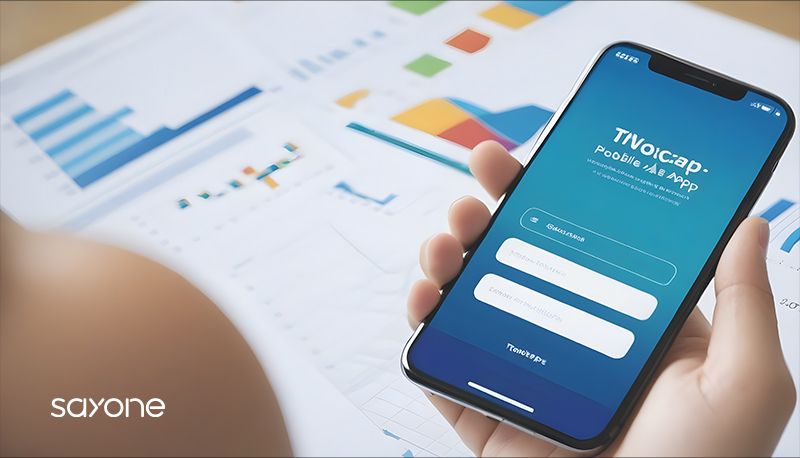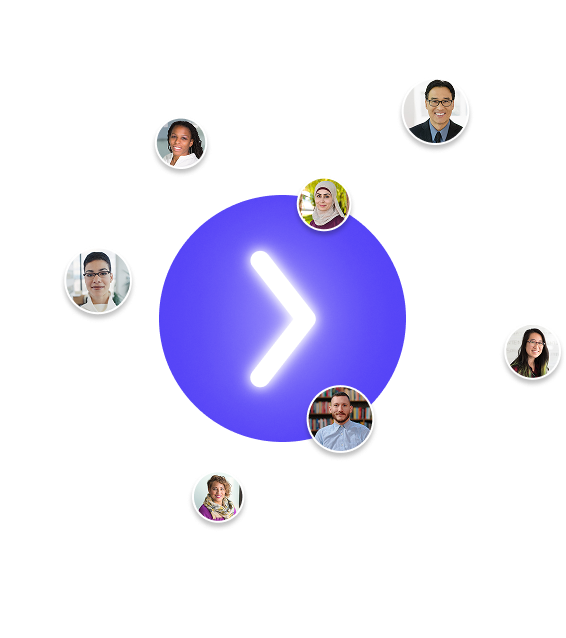
Subscribe to our Blog
We're committed to your privacy. SayOne uses the information you provide to us to contact you about our relevant content, products, and services. check out our privacy policy.

Ranju R December 14, 20239 min read

Generating table of contents...
Mobile app prototyping is a process crucial in app development. It involves creating a preliminary model of the final application. This prototype model allows developers and stakeholders to understand the app's functionality and design before full-scale production. It's a test version that helps refine ideas and spot potential issues early.
The role of prototypes in app development can't be overstated. They serve as a visual guide for developers and a presentation tool for stakeholders. Prototypes help in gathering user feedback, which is critical in fine-tuning the app's usability and design. They reduce time and costs by identifying changes early in the development cycle.
Prototypes differ from final products in various ways. They are usually less polished and often used for testing and feedback. While the final product is a fully functional application, prototypes may only include key features and functionalities necessary to convey the app's concept. This distinction is crucial in setting realistic expectations during the development phase.
In 2025, with a wide variety of prototyping tools available, choosing the right one is crucial. These tools offer different functionalities, from basic wireframing to advanced interactive prototypes, catering to various needs in the app development process.

In this initial phase, you're laying the groundwork. It starts with brainstorming sessions, where you define your app's objectives and identify the needs of your target audience. Conceptualizing the app's key features is crucial at this stage. Tools like mind maps help organize thoughts and provide a clear direction for the app's development. Consider the problems your app aims to solve and how it aligns with user expectations.
Now, it's time to visualize your ideas. This step involves creating wireframes, which are basic blueprints of your app's layout. These wireframes evolve into more detailed mockups, providing a clearer view of how the app will look and feel. You can design interactive prototypes that mimic the user experience using user-friendly prototyping tools like Figma or Sketch. This phase is collaborative, often involving feedback from developers, designers, and stakeholders to ensure the prototype aligns with the envisioned product.
Checkout Importance of CI/CD in Mobile App Development
In the final stage, your prototype is tested by real users. This testing uncovers valuable insights about the app's usability and functionality. Tools like InVision or Marvel are particularly useful here, as they allow users to interact with the prototype and provide direct feedback. This feedback is crucial for making necessary iterations to the prototype, ensuring that the final product is user-friendly and meets the intended goals. Iterative testing helps refine the app, ensuring it's ready for the next stages of development.
Checkout Different Types of Mobile Application Testing & Tools Used
In choosing the right tool, consider the complexity of your prototype, collaboration needs, and user experience expertise. These tools offer diverse functionalities to cater to different prototyping requirements.
Ever heard about Microservice? Checkout its benefits & How Developers Implement It
Creating a mobile app prototype is a crucial step in app development, allowing designers and stakeholders to visualize and test an app's functionality before full-scale development. This process involves several key stages, from initial concept clarification to the incorporation of user and stakeholder feedback. By following a structured approach, developers can ensure that the final product aligns well with user needs and expectations. Below is a detailed guide on effectively creating a mobile app prototype.
Start by clearly defining what your app aims to achieve and who its target users are. This step involves market research and understanding user needs.

Create rough sketches to outline the basic layout and features of your app. This can be done using simple tools like pen and paper or digital tools like Balsamiq.
Select a tool that fits your needs. Tools like Adobe XD or Marvel can be ideal for beginners, whereas professionals may prefer more comprehensive platforms like Figma or InVision.

Transfer your sketches into the chosen tool. This involves designing screens and adding elements like buttons, text, and images.
Checkout the Guide to Designing an Engaging User Interface for Mobile Apps
Add interactivity to your prototype. This means creating links between different screens and simulating user actions like clicking, scrolling, and swiping.
Conduct initial tests of your prototype to check for usability and design flaws. Make necessary revisions based on this feedback.
You can create a comprehensive and effective mobile app prototype by following these detailed steps. This approach blends insights from the given references, emphasizing practical application and user-centric design.
Looking to Outsource your mobile app development? Here is the complete guide
Designing wireframe prototypes is a crucial step in mobile app development. Before starting your prototyping project, learn what low, medium, and high-fidelity wireframes are. Let's dive in:
Checkout 10 Best Frameworks for Android App Development
Check out the prototyping challenges & design case studies of Town Hall Guide.
Check out the prototyping challenges & design case studies of MSB
Check out the prototyping challenges & design case studies of Dream Katcher
Wireframe prototypes, ranging from low to high fidelity, are essential in app design, each serving different stages of the development process.
By focusing on these aspects, you can create prototypes that visualize your app concept and provide valuable insights into user needs and preferences, which are essential for a successful app launch in 2025.
Checkout Mobile App Security: Top 7 Best Practices
Advancements in mobile app prototyping are reshaping how developers and designers approach their work. With sophisticated tools like Figma, InVision, and Mockplus, creators can now construct more complex and interactive designs, moving far beyond basic prototypes. These tools enable detailed visualization and real-time collaboration and incorporate advanced features like interactive elements and high-fidelity mockups, which are crucial for today's dynamic app development landscape.
As we look to the future, mobile app prototyping is set to become even more integral to the development process. The trend leans towards tools that offer advanced design capabilities and facilitate smoother transitions between the design and development stages. This evolution is essential for meeting rising app functionality and user experience expectations.
For businesses and individuals looking to stay ahead in mobile app development, embracing these advanced prototyping tools is key. At SayOnetech, we offer expertise in leveraging these innovative technologies to bring your app ideas to life. Connect with us to make use of advanced prototyping for your mobile app project.

We're committed to your privacy. SayOne uses the information you provide to us to contact you about our relevant content, products, and services. check out our privacy policy.

About Author
Helping businesses scale-up their development teams ( Python, JavaScript, DevOps & Microservices)

We collaborate with visionary leaders on projects that focus on quality